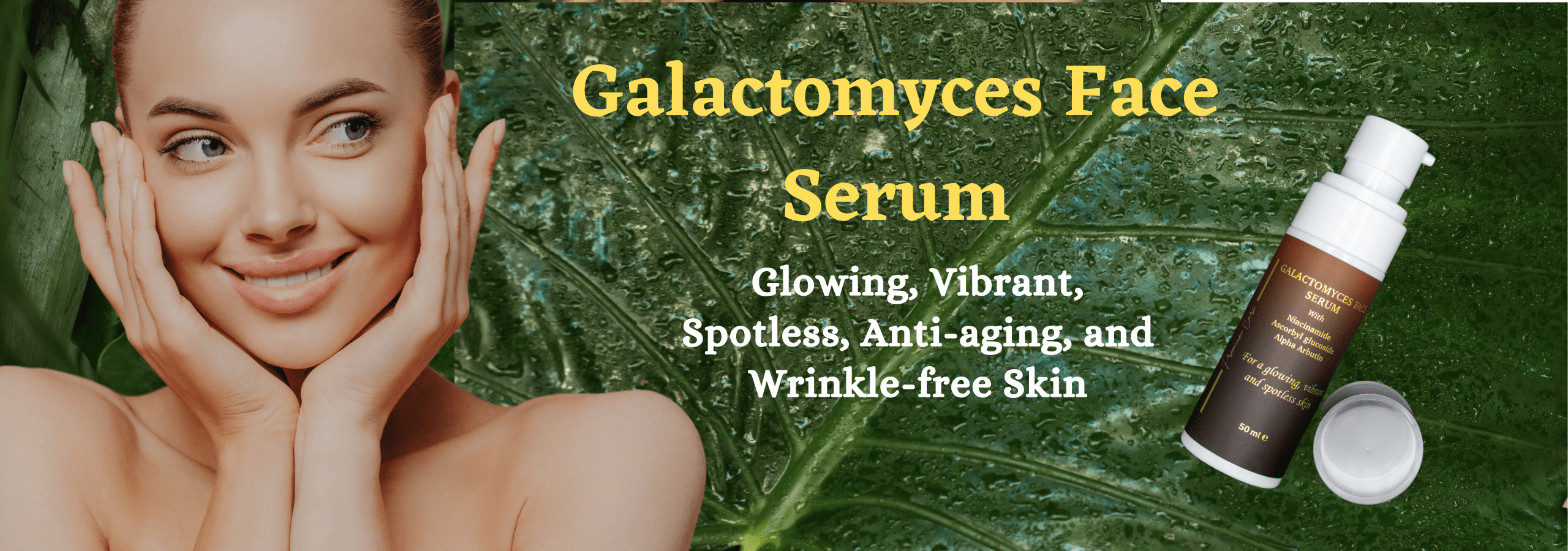Introduction
Our skin, being the body's largest organ, serves as a protective barrier against external threats. However, it is not immune to the damaging effects of our environment. The constantly changing environmental conditions, such as pollution, ultraviolet radiation, extreme temperatures, and chemicals, can significantly impact our skin health. This blog will delve into the ecological factors that affect our skin and discuss ways to protect and maintain its health.
1. Effects of Air Pollution on Skin Health
In today's increasingly polluted world, the detrimental effects of air pollution on our overall health cannot be ignored. While the impact on respiratory and cardiovascular systems is well-known, it is equally important to shed light on the often overlooked effects of air pollution on our skin health. This section will discuss how air pollution affects our skin, the mechanisms behind this damage, and how we can protect and nourish our skin.
The Link Between Air Pollution and Skin Health
Exposure to pollutants in the air, such as particulate matter, volatile organic compounds, nitrogen oxides, and heavy metals, has been shown to have a detrimental impact on our skin. Various studies suggest a correlation between air pollution and skin conditions, including acne, eczema, dermatitis, and premature ageing.
Mechanisms of Skin Damage
Oxidative Stress and Free Radicals
Air pollutants generate reactive oxygen species (ROS) upon contact with the skin. ROS are highly reactive molecules that cause oxidative stress, damaging cellular components like lipids, proteins, and DNA. This oxidative stress leads to structural and functional changes in the skin, contributing to ageing and other skin disorders.
Inflammation and Barrier Dysfunction
Air pollutants can trigger an inflammatory response in the skin, leading to redness, irritation, and allergic reactions. The skin's natural barrier function is compromised, allowing harmful substances to penetrate more efficiently and causing further damage.
DNA Damage
Exposure to air pollutants can result in DNA damage in skin cells. Air pollutants can lead to mutations and alterations in gene expression, ultimately affecting the skin's ability to repair and regenerate itself.
Visible Effects of Air Pollution on Skin
Premature Aging
Air pollution accelerates the ageing process by increasing the production of collagen-degrading enzymes (MMPs) and reducing collagen and elastin synthesis. Premature ageing leads to the appearance of fine lines, wrinkles, and sagging skin.
Pigmentation Disorders
Pollution exposure can disrupt melanin production, resulting in pigmentation disorders such as age spots, melasma, and uneven skin tone.
Acne and Skin Irritation
Air pollution can clog pores, leading to the development of acne. It can also trigger inflammation, causing redness, itching, and irritation in sensitive individuals.
Protecting and Nourishing Our Skin
Cleansing
Thoroughly cleanse your face twice daily to remove particulate matter and other pollutants on the skin's surface. Use a gentle, pH-balanced cleanser to avoid stripping the skin of its natural oils.
Antioxidant Protection
Apply antioxidant-rich skincare products containing vitamins C and E, green tea extract, and other antioxidants. These antioxidants neutralize free radicals, reducing oxidative stress and preventing damage to the skin.
Barrier Repair
Use moisturizers with ceramides, hyaluronic acid, and niacinamide to strengthen the skin's barrier function and prevent pollutants from penetrating deeply.
Sun Protection
A broad-spectrum sunscreen with a high SPF daily should be applied to shield your skin from harmful UV rays, which can exacerbate the effects of air pollution.
Get adequate sleep, follow a balanced diet rich in antioxidants and omega-3 fatty acids, and stay hydrated to support your skin's natural repair processes and maintain overall skin health.
Air pollution significantly threatens our skin health, causing various issues, from premature ageing to skin disorders. By understanding the mechanisms behind these damaging effects and implementing a comprehensive skincare routine, we can protect and nourish our skin amidst environmental challenges. Let's prioritize our skin's well-being and strive for a healthier and cleaner environment.
2. Ultraviolet Radiation and Skin Damage
As the sun's rays reach our planet, they are composed of three main types of ultraviolet (UV) radiation: UVA, UVB, and UVC. While UVC is effectively blocked by the Earth's atmosphere, UVA and UVB radiation can potentially harm our skin. This section aims to shed light on the dangers of ultraviolet radiation and its effect on our skin, providing insights into protecting ourselves from its damaging effects.
The Science Behind Ultraviolet Radiation
Understanding UVA and UVB Radiation
UVA radiation accounts for most UV rays that reach the Earth's surface. Unlike UVB rays, UVA rays can easily penetrate through clouds and glass, making them a threat throughout the year, even on cloudy or rainy days. Moreover, UVA rays can penetrate deeper into the skin, contributing to long-term skin damage and premature ageing. On the other hand, UVB radiation is responsible for sunburns and is especially harmful during the summer months. Unlike UVA rays, UVB rays cannot penetrate deeply into the skin. However, they still contribute to DNA damage, increasing the risk of developing skin cancers.
Effects on the Skin
Continuous exposure to ultraviolet radiation can result in various skin issues. The immediate effects include sunburns, tanning, and the formation of dark spots, commonly known as age spots or liver spots. Over time, accumulated damage caused by UV radiation can lead to cellular DNA mutations, which may increase the likelihood of developing skin cancers. Additionally, prolonged UV exposure makes premature ageing signs like wrinkles, sagging skin, and elasticity loss prominent.
Protecting Your Skin
Broad-Spectrum Sunscreens
Using broad-spectrum sunscreens with an SPF of 30 or higher is essential to protect skin against UVA and UVB rays—sunscreen application generously every two hours, especially when spending extended periods in the sun or after swimming.
Protective Clothing and Accessories
Wearing long-sleeved shirts, pants, and wide-brimmed hats provides additional protection from harmful UV rays. Consider using tightly woven fabric and dark colours, offering better UV protection. Remember to shield your eyes by wearing sunglasses blocking UVA and UVB radiation.
Seek Shade and Limit Exposure
To minimize UV exposure, seek shade during peak sun hours. If being outdoors is unavoidable, try to stay under shaded areas like trees or use umbrellas. Approximately 80% of the sun's harmful UV radiation can still reach your skin, so remember to use sunscreen.
Lifestyle Modifications
Making conscious lifestyle choices can further protect your skin. Avoid tanning beds that emit significant amounts of UV radiation, and opt for self-tanning lotions instead. Encourage regular skin checks by a dermatologist to detect any early signs of skin cancer.
Understanding the hazards of ultraviolet radiation and its effect on the skin is crucial for maintaining healthy and radiant skin. The risk of skin damage can be significantly reduced by following the preventative measures outlined, such as using broad-spectrum sunscreens, wearing protective clothing, seeking shade, and making lifestyle modifications. Remember, taking care of your skin today ensures a healthier future.
3. Impact of Climate on Skin Health
Our skin is a barrier between our internal organs and the external environment, making it highly susceptible to climate conditions. Whether it's sweltering heat, cold winds, or excessive humidity, the climate we live in can have a significant impact on our skin health. In this section, we will explore the effects of different weather conditions on the skin and provide tips to protect and maintain a healthy complexion year-round.
Dry and Cold Climate
Living in regions with dry and cold climates can wreak havoc on your skin. The lack of humidity in the air can lead moisture to evaporate from the skin, leading to dryness, flakiness, and even irritation. Additionally, cold temperatures can constrict blood vessels and decrease blood flow and supply of oxygen to the skin.
It's crucial to amp up your moisturizing routine in dry and cold climates. Opt for a hydrating moisturizer with hyaluronic acid, shea butter, or ceramides to lock in moisture. Remember to protect your skin with broad-spectrum sunscreen, as UV rays can still harm the skin even in colder months.
Hot and Humid Climate
Excessive sweating clogs skin pores and increases sebum production in hot and humid climates, resulting in breakouts and acne flare-ups. Additionally, increased humidity can diminish the effectiveness of your skincare products, as they may not penetrate the skin effectively.
Try incorporating lightweight and non-comedogenic skincare products into your routine to prevent breakouts and maintain a healthy complexion. Cleansing your face twice daily and using clay masks once or twice a week can help combat excess oil and clear your pores. Finally, stay hydrated by drinking plenty of water to promote healthy skin from within.
High-altitude Climate
If you live in high-altitude areas, you may experience drier air with lower atmospheric pressure. The reduced pressure can cause the skin to lose moisture more rapidly, leading to dehydration and a compromised skin barrier. Moreover, increased exposure to UV radiation at higher altitudes can heighten the risk of sunburn and skin cancer.
It's crucial to apply sunscreen with a high sun protection factor (SPF) daily To protect your skin in high-altitude settings. Consider using heavier moisturizers and facial oils to replenish lost moisture and strengthen your skin's barrier. Wearing protective clothing, such as hats and long sleeves, can also help shield your skin from harmful UV rays.
The impact of climate on skin health is undeniably significant. Understanding the influence of weather conditions on your skin allows you to implement appropriate skincare measures to maintain a healthy complexion. Whether you live in a dry and cold or hot and humid climate, taking care of your skin using suitable products and protective measures can help ensure its overall well-being.
4. Chemical Exposure and Skin Disorders
In today's industrialized world, we are exposed to various chemicals daily. While many of these chemicals have enabled significant technological advancements and convenience, they can also pose various health risks, including skin disorders. Chemical exposure can lead to multiple skin problems, from mild irritations to severe allergic reactions. This section will explore the connection between chemical exposure and skin disorders. We will also provide valuable tips to minimize chemical exposure and protect your skin.
Understanding Chemical Exposure
Chemical exposure occurs when our skin comes into contact with harmful substances found in our environment. These include industrial chemicals, cleaning agents, cosmetics, pesticides and other toxic substances. Direct skin contact, inhalation, or ingestion of these chemicals can result in adverse reactions. While the severity of the response often depends on the individual's sensitivity, prolonged or repeated exposure to certain chemicals increases the risk of developing skin disorders.
Common Skin Disorders Caused by Chemical Exposure
Contact Dermatitis
Contact dermatitis is the most prevalent skin disorder resulting from chemical exposure. It occurs when the skin reacts to an irritant or allergen. Irritant contact dermatitis is a non-allergic reaction caused by direct irritation to the skin, while allergic contact dermatitis occurs when the immune system overreacts to an allergen. Common symptoms include redness, itching, swelling, and blisters.
Chemical Burns
Chemical burns can result from exposure to strong acids, alkalis, or corrosive substances. They vary in severity depending on the concentration and duration of exposure. Symptoms can range from mild redness and pain to severe tissue damage, blistering, and scarring.
Skin Allergies
Various chemicals can trigger allergic reactions in susceptible individuals. These allergies may develop over time, making it difficult to pinpoint the exact cause. Symptoms can include itching, redness, hives, and swelling.
Occupational Chemical Exposure
Certain occupations, such as those in the chemical industry, healthcare, construction, and cleaning, carry a higher risk of chemical exposure. Workers in these industries face a greater likelihood of developing occupational skin disorders. Employers should provide adequate protective measures and training to minimize employee chemical exposure.
Prevention Tips
Use Protective Equipment
When dealing with chemicals, wearing appropriate protective gear, such as gloves, goggles, masks, and lab coats, is essential. Protective prevents direct skin contact and inhalation of toxic fumes.
Read Product Labels
Always read product labels to understand the potential dangers associated with chemical products. Look for products that are labelled as hypoallergenic, non-toxic, and fragrance-free.
Practice Proper Hygiene
Thoroughly wash your hands and any exposed skin after handling chemicals. Use mild, non-irritating soaps and lukewarm water.
Limit Exposure Time
Try to minimize the duration of chemical exposure whenever possible. If prolonged exposure is unavoidable, take frequent breaks and ensure adequate ventilation.
Moisturize Regularly
Properly moisturized skin forms a protective barrier against chemical irritants. Choose products with minimal chemicals and fragrances to avoid potential allergens.
Seeking Medical Help
If you suspect chemical exposure has caused a skin disorder, seek medical attention promptly. A dermatologist can accurately diagnose the condition and recommend appropriate treatment options.
Chemical exposure is prevalent today, leading to various skin disorders. By understanding the risks and following preventive measures, we can minimize the harmful effects of chemical exposure on our skin. Remember to prioritize your safety and take proactive steps to protect your skin from potential irritants and allergens.
Understanding the environmental effects on skin health is crucial in adopting proactive measures to protect and maintain the vitality of our skin. By implementing the abovementioned strategies and being mindful of our products and the environmental conditions we expose our skin to, we can ensure healthier and more resilient skin throughout our lives.
References:
- Lim HW, et al. (2017). Air pollution and skin diseases: Adverse effects of airborne particulate matter on various skin diseases. Journal of Dermatological Sciences, 89(3): 225-231.
- Lim HW, et al. (2017). Air pollution and skin diseases: Adverse effects of airborne particulate matter on various skin diseases. Journal of Dermatological Sciences, 89(3): 225-231.
- Vierkötter A, et al. (2010). Airborne particle exposure and extrinsic skin ageing. Journal of Investigative Dermatology, 130(12): 2719-2726.
- Singh RK et al. (2020). The role of particulate matter in skin ageing: Evidence and uncertainties. Science of the Total Environment, 722: 137869.
- Rinnerthaler M, et al. (2015). Oxidative stress in ageing human skin. Biomolecules, 5(2): 545-589.
- Cadet J et al. (2016). Oxidatively generated base damage to cellular DNA. Free Radical Biology and Medicine, 107: 35-44.
- American Cancer Society. (2021). Ultraviolet (UV) Radiation. Retrieved from https://www.cancer.org/cancer/skin-cancer/prevention-and-early-detection/what-is-uv-radiation.html
- Centres for Disease Control and Prevention. (2021). How Can I Protect My Children from the Sun? Retrieved from https://www.cdc.gov/cancer/skin/basic_info/children.htm
- World Health Organization. (2021). Ultraviolet Radiation. Retrieved from https://www.who.int/news-room/q-a-detail/radiation-ultraviolet-(uv)
- Baumann, L. (2002). The Effects of Environment on Skin. Dermatologic Clinics, 20(4), 689-700.
- Farage, M. A., et al. (2008). Climate Change and Skin Health. Journal of Cutaneous Medicine and Surgery, 12(5), 216-222.
- Lademann, J. et al. (2018). Pollution and Skin: From Epidemiological and Mechanistic Studies to Clinical Implications. Journal of Dermatological Science, 90(3), 232-239.
- Lim, H. W. et al. (2018). Photoprotection in Different Types of Skin. Journal of the American Academy of Dermatology, 78(6), S101-S109.
- Schwab, V. et al. (2019). Impact of the Environment on Skin Aging and Prevention. ASDS Guidelines.
- Yosipovitch, G. et al. (2019). Skin Climate and its Role in the Pathophysiology and Therapy of Atopic Dermatitis. Journal of Allergy and Clinical Immunology, 144(6), 1508-1515.
- Liu, Y., et al. (2017). Occupational Skin Diseases: An Evaluation of Workers' Compensation Data from Guangzhou, China. International Journal of Environmental Research and Public Health, 14(3), 248.
- National Institute for Occupational Safety and Health. (2019). Chemical Hazards and Toxic Substances: Skin Exposures and Effects.
- S. Department of Labor. (2021). Chemical Exposure and Risk Assessment.
- (2020). Contact Dermatitis.
- Mayo Clinic. (2021). Chemical Burns.







